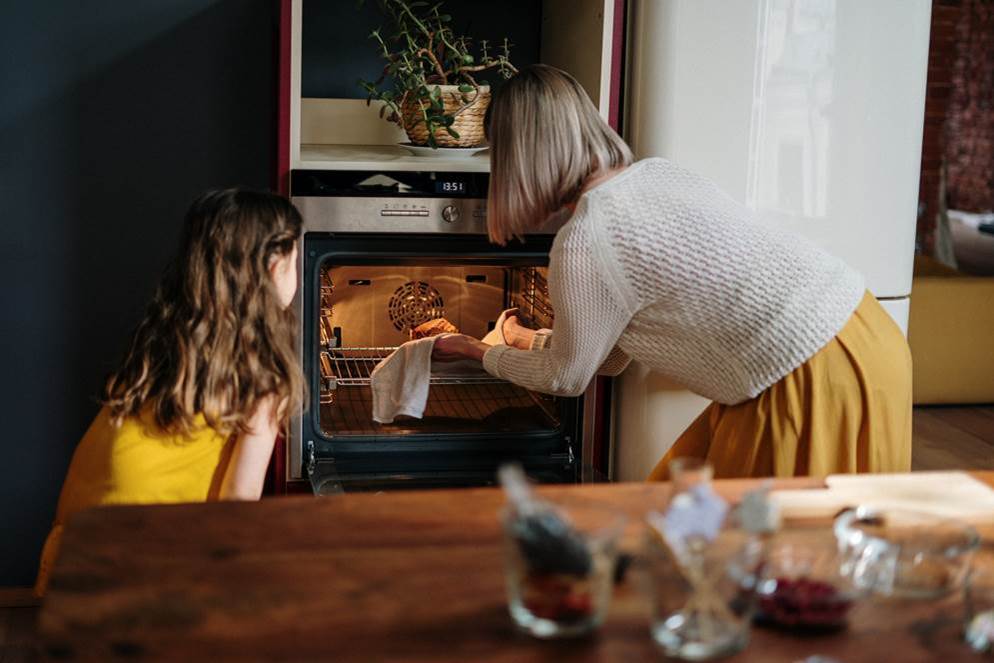Baking on a budget: Cake experts offer top tips to reduce costs of baking at home

It doesn’t matter if you’re a kitchen connoisseur or a first timer, we are all looking at ways to reduce our bills while still enjoying doing what we love – baking.
The kitchen is home to some of the biggest appliances in the home, such as the oven, microwave, fridge-freezer and so on. With this being said, the kitchen can be one of the biggest culprits of energy consumption – something we are all concerned about reducing at the moment with energy bills rising. The cost of living crisis also means that buying the right utensils and equipment for baking is more of a luxury than a necessity.
The UK’s largest independent online cake manufacturer Sponge.co.uk, understands baking is a passion for so many of us, and has compiled some top tips for reducing costs when baking at home to ensure home bakers can keep doing what they love, without serious expense.
Cook as much as you can in the oven all at once
image001.jpg
When preparing a number of baked goods, make sure the ingredients are prepared in good time so that the finished products can all be cooked in the oven at once. This will ensure your oven isn’t on longer than it needs to be, reducing the amount of energy consumed and ultimately saving you a few pennies with every use.
Batch cooking, can prove a great way to reduce oven time and cut expenses on a day-to-day basis.
Buy second hand
There’s absolutely no shame in buying equipment and cooking utensils second hand. The fact is, buying the very best in equipment from leading retailers can prove too costly at the best of times, let alone during a cost-of-living crisis.
So, before you spend a fortune on a brand-new piece of equipment for baking, consider shopping in charity shops, car-boot sales or online resellers such as eBay to find equipment that will not be brand-new, but will still serve its purpose very well.
Alternatively, you can also shop in discounted stores for cheap but brilliant cooking equipment. If you know someone who also likes to bake, why not consider sharing the cost?
Put your microwave to work!
Microwaves generally use less energy than ovens. Most ovens use up to 9p per 10 minutes of baking time (likely to increase with the rising energy price cap!), whereas microwaves consume approximately a third of this energy usage in comparison to the oven (*2).
Microwaves also don’t require ‘pre-heating’ meaning less time spent warming your oven and again, less energy usage.
Where appropriate then, use the microwave to melt chocolate or warm up your next cake or brownie. Do remember to never use foil in the microwave as it could catch fire.
Try budget friendly baking recipes
Everyone can still experience the many joys of baking, without needing to spend excessively. There are a number of budget friendly recipes online that cuts down on the number of ingredients required, but will still ensure the end product serves plenty. Including banana bread recipes with only a few ingredients, as well as simple muffin recipes that allows you to be creative over whether you wish to add further chocolate, nuts, various fruits or just sticking to the fundamental recipe.
‘Easy’, cost-effective recipes will allow you to continue doing what you love, for less.
Shop own brand
When trying to bake on a budget, make sure your weekly shop reflects this. After all, it’s the food we consume that often racks up the bills.
One simple way to reduce your shopping bill is by shopping for own brand ingredients in major UK supermarkets. Most leading supermarkets have an extensive own brand range, including a number of food items used for baking. Buying products such as butter, milk, and chocolate can be less costly if we choose not to buy from brands.
These are just a number of ways that you can continue doing what you love, while ensuring you don’t overspend.
However, if you’re looking to save yourself hassle, as well as money, why not try one of Sponge.co.uk’s delicious sweet treats, available to order on next day delivery and with gluten-free, dairy-free and vegan options.






